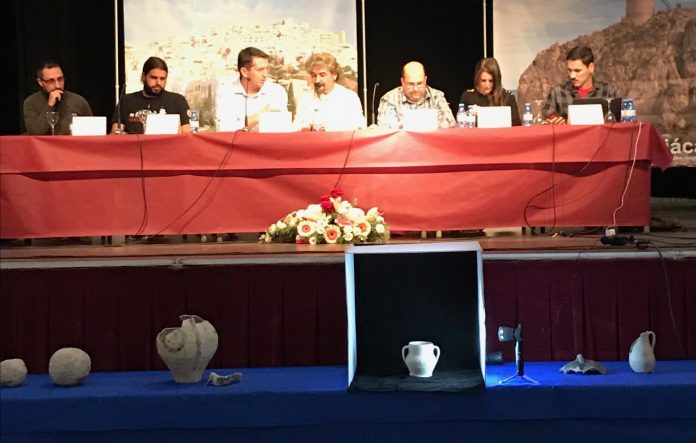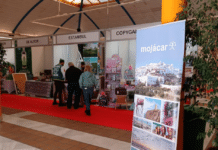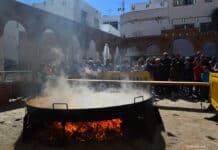Although it is only a short while since the first phase of the excavation work on the Mojácar la Vieja settlement ended, the technical team from Granada University’s Biocultural Archaeology Laboratory in the Medieval History Department have already produced the first data and findings that they were keen to share with the people of the town as well as at a national and international level.
Those interested in the project gathered at the town’s Centro de Usos Múltiples last week with the Mayor, Rosmarí Cano, the Councillor for Tourism, Emmanuel Agüero, members of the local Government team, Beatriz Becket and Teresa Santiago from the Valparaíso Foundation Board, as well as the specialist archaeologists who took part in this first excavation.
The Project Director, José María Martín Civantos, began by saying how important the project is for the municipality as part of its cultural, social and touristic development, although it is additionally of high relevance to national and international forums. He praised the Council’s plan to open up its cultural heritage in this way, whilst promoting tourism and economic development and creating an extra identity for Mojácar.
He stressed the importance of preserving the landscape shaped from prehistoric times by man as a fundamental element of the cultural environment, since it has the answers to many archaeological and historical questions.
As for the actual excavations, the findings found so far date back to the 12th and 13th century, although these are from the work done on the first strata that would have relevance to the settlement’s later years.
In addition to adapting the access path, the team worked on the highest area by the cistern, which was already known about and, at half way up the slope, where there an access gate-tower and old wall are located.
The ancient cistern, the largest preserved example from the Kingdom of Granada and throughout Spain, is 18 metres long, 4.5 metres wide and 2.3 metres deep. This could have held 172,000 litres of water and, possibly more. Another cistern has been discovered in the same area, which was constructed at a later date and attached to the first, on which a defensive tower was erected. Other discoveries include a mosque, an ammunition store with stone balls, which confirms the presence of a catapult mechanism and other defences. The remains of what would have been a forge have also been found, which was later a kitchen, which confirms the presence of weapons and troops.
At another location in the middle area, the entrance gate to Mojácar la Vieja was found, an example of a door-tower commonly used at the time, which established the access route to the populated centre at that time.
The wall characteristics reveal repair at several points, although it is unknown if these were due to structural failure or the Christian attacks that were taking place in the area at the time during the reconquest of Muslim occupied lands.
Although it has not been possible yet to demarcate the entire wall, it is known that there were at least 13 towers, maybe more, spaced around the perimeter. Also, remains of houses with easily recognizable rooms have been found attached to the wall with items such as a bread oven, a latrine in perfect condition and decorative remnants.
According to the MemoLab team, there are now doubts about the date of the settlement’s origin, although dates are being estimated at around the 8th Century, with the greater concentration of inhabitants in the 12th Century when it takes on the character of a town with the mosque and more evidence of production. There are still obviously many questions to answer that will be highly useful to discover more about life on Mojácar la Vieja as well as for the study of the Middle Ages in Spain and Andalucían society.
What does seem clear, however, is the gradual, programmed abandonment in the middle of the 13th century from Mojácar la Vieja to the new site that we know today, which offered a better strategic situation and fortification.
Archaeologists consider that the settlement of Mojácar la Vieja is in a good state of conservation, with “enormous patrimonial potential”, offering a key to explain life at that time and understand the history of the years that were of such importance to the entire Mediterranean region.
The presentation concluded with thanks from Emmanuel Agüero and the team of Granada University archaeologists to the Valparaíso Foundation for their collaboration and support, as well as to the company Patrimonio Inteligente. Also thanked were the volunteer archaeologists that came from all over Spain, Brazil and Italy to collaborate in the work.
Finally, the 470 townspeople and visitors who took part in the guided visits were thanked for their interest, as well as those who participated in field tasks and workshops, many of whom additionally spontaneously turned up at the site eager to see the progress being made.





